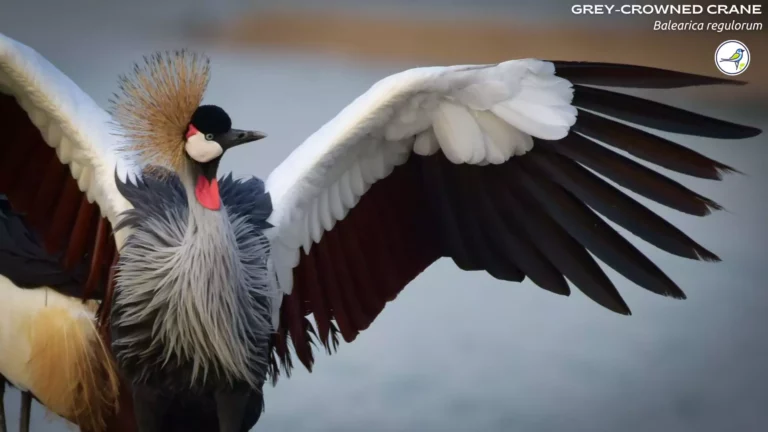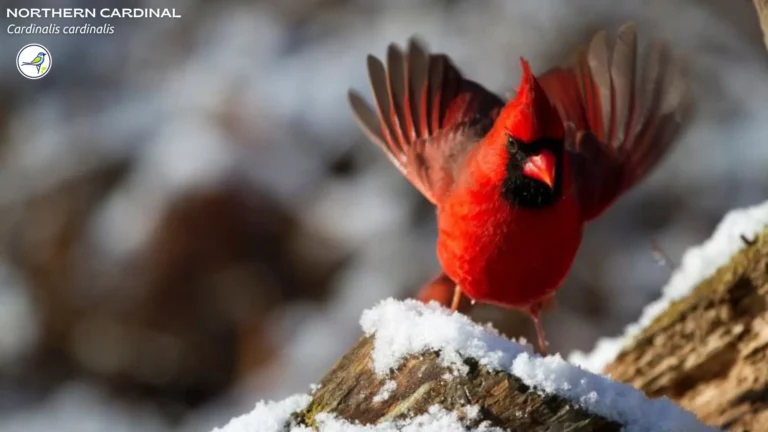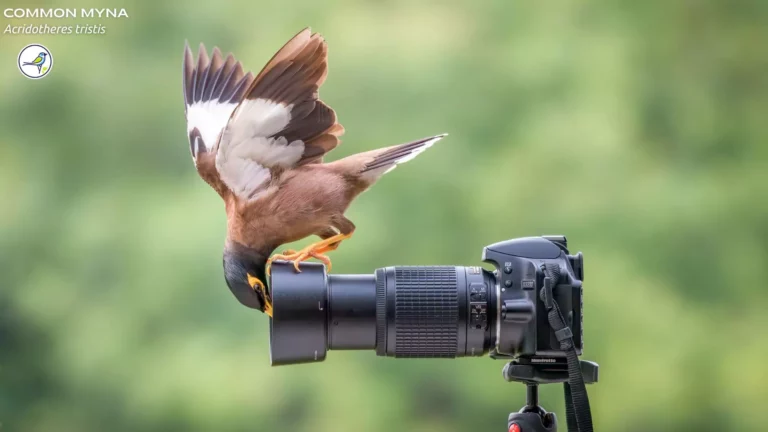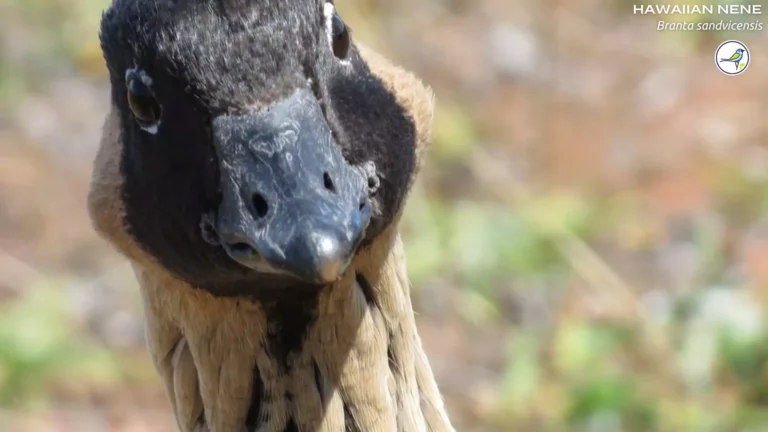Birds with Night Vision: Masters of the Dark Skies
Birds with night vision are among nature’s most captivating and mysterious creatures. In this exploration, we delve deep into the intriguing world of avian night vision adaptations. These remarkable abilities allow certain birds to navigate, hunt, and thrive in the darkness, unveiling a realm of natural wonders that often goes unnoticed.
Understanding how birds achieve night vision opens a portal to their extraordinary sensory world. From owls silently gliding through the night to nightjars camouflaged in the shadows, their adaptations are nothing short of extraordinary. Join us as we uncover the secrets behind their nocturnal prowess and learn why night vision is an essential survival tool for these avian wonders.
Prepare to be amazed by the physiological marvels of avian night vision and gain insights into the fascinating lives of these creatures of the night. Let’s embark on a journey to explore how they see, hunt, and thrive when the sun goes down.
The Physiology of Night Vision in Birds
Birds with night vision possess a range of incredible physiological adaptations that enable them to see clearly in low-light conditions. Understanding these unique features sheds light on their nocturnal capabilities.
1. High Rod Cell Density: One key adaptation is the abundance of rod cells in their retinas. Rod cells are photoreceptor cells specialized for low-light vision. This high rod cell density allows these birds to detect even the faintest of light sources during the night, giving them a distinct advantage over diurnal species.
2. Enhanced Light-Gathering Abilities: Birds with night vision often have larger eyes relative to their body size. This increased eye size allows for greater light-gathering capabilities, ensuring they can make the most of the minimal light available during the night.
3. Tapetum Lucidum: Some species possess a reflective layer in the eye known as the tapetum lucidum. This layer enhances night vision by reflecting and amplifying incoming light, effectively giving their retinas a second chance to capture photons and improving their ability to detect prey in the dark.
4. Pupil Adjustment: Nocturnal birds can also adjust the size of their pupils to control the amount of light entering their eyes. This flexibility helps them adapt to changing light conditions, such as when transitioning from twilight to complete darkness.
These adaptations collectively enable birds with night vision to thrive in environments where light is limited, making them expert hunters and navigators under the cover of darkness. In the following sections, we’ll delve deeper into specific bird species that showcase these remarkable abilities.
Owls: The Ultimate Night Hunters
When we think of birds with exceptional night vision, owls are often the first to come to mind. These enigmatic birds are true masters of the night, and their unique adaptations make them extraordinary nocturnal hunters.

1. Large Eyes: Owls have disproportionately large eyes compared to their body size. These massive orbs are finely tuned for gathering and processing light. Their size allows for a greater surface area on the retina, which means more photoreceptor cells to capture even the faintest glimmers of moonlight.
2. Facial Discs: Another remarkable feature of owls is their facial discs. These feathered structures act like satellite dishes, channeling sound waves to their ears and helping them locate prey in complete darkness. Combined with their exceptional vision, owls are incredibly efficient predators.
3. Nocturnal Behavior: Owls are predominantly nocturnal, meaning they are most active during the night. This behavioral adaptation aligns with their exceptional night vision, enabling them to hunt when other creatures are at a disadvantage.
4. Silent Flight: Owls have developed specialized feathers that reduce turbulence and noise during flight, allowing them to approach prey silently. This stealthy approach, combined with their keen night vision, makes them deadly efficient hunters.
5. Sharp Talons and Beak: Once an owl spots its prey, its sharp talons and powerful beak come into play. Their talons lock onto the target with a vice-like grip, ensuring a successful capture.
Owls exemplify the epitome of avian night vision, using their extraordinary adaptations to become top predators in their ecosystems. From the iconic hoots of the great horned owl to the ghostly presence of the barn owl, these birds are a testament to nature’s ingenuity.
Nightjars: Masters of Camouflage and Sight
While owls often steal the spotlight when it comes to night vision, nightjars are another group of birds that excel in the art of nocturnal hunting. These remarkable birds are not only masters of camouflage but also possess unique adaptations for low-light vision.

1. Cryptic Plumage: Nightjars are experts at blending into their surroundings. Their cryptic plumage, resembling bark or leaves, makes them nearly invisible during the day and provides them with excellent camouflage when they’re roosting or nesting on the ground.
2. Wide Gape and Whiskers: Nightjars have wide gapes and bristle-like feathers around their mouths, creating a net-like structure. This adaptation aids in capturing flying insects, their primary food source, while flying silently through the night.
3. Large Eyes: Like owls, nightjars have relatively large eyes that help them gather as much available light as possible. Their eyes are adapted for detecting movement in dim light, allowing them to track insects on the wing.
4. Nocturnal Behavior: Nightjars are primarily crepuscular and nocturnal, meaning they are most active during twilight and at night. This behavior aligns with their superb night vision, enabling them to capitalize on the abundance of nighttime insects.
5. Nesting and Roosting: Nightjars are ground-nesters and often roost on the forest floor. Their nocturnal adaptations, coupled with their camouflage, help protect them from daytime predators.
These avian marvels showcase nature’s ingenuity in adapting to the challenges of the night. Nightjars’ ability to see and hunt in low-light conditions while staying hidden during the day is a testament to their remarkable survival strategies.
Night-Herons: Fishing Under the Moonlight
Night-herons, a group of wading birds, are skilled hunters that have evolved to thrive in nocturnal environments. Their unique adaptations make them exceptional at capturing prey under the cover of darkness.

1. Nocturnal Fishing: Night-herons are known for their distinctive habit of fishing during the night. They wade into shallow waters and employ their keen night vision to spot aquatic prey like fish, crustaceans, and amphibians. Their patient and stealthy approach allows them to secure a meal even when visibility is low.
2. Large, Forward-Facing Eyes: These birds have large eyes positioned on the front of their heads, enabling binocular vision. This adaptation enhances their depth perception and helps them accurately judge distances, crucial for precise strikes when hunting in dim light.
3. Stout Bills and Powerful Necks: Night-herons have stout bills and strong neck muscles that allow them to swiftly capture and consume their prey. Their bills are designed for puncturing and gripping, making them effective hunters of aquatic creatures.
4. Roosting in Colonies: Night-herons often roost in colonies during the daytime, providing safety in numbers. This communal behavior helps protect them from potential daytime predators, allowing them to conserve energy for their nighttime forays.
5. Nocturnal Behavior: Like owls and nightjars, night-herons are primarily nocturnal, taking advantage of the darkness to hunt when many other bird species are inactive.
Observing these birds in action is a testament to their prowess in utilizing their night vision to locate and capture prey in low-light conditions. Night-herons serve as a prime example of how adaptation to the night can lead to a successful and specialized niche in the avian world.
Nocturnal Migratory Birds
While some birds with night vision are known for their sedentary lifestyles, there are others that take to the skies at night, embarking on incredible migratory journeys. These nocturnal migrants possess unique adaptations to navigate and thrive during their nighttime flights.
- Nighttime Navigation: Nocturnal migratory birds, such as songbirds and waterfowl, have developed specialized mechanisms for navigating in the dark. They rely on cues like star patterns, the Earth’s magnetic field, and celestial landmarks to maintain their course over long distances.
- Reducing Predation Risk: One advantage of migrating at night is the reduced risk of predation. Many daytime predators are less active during the night, allowing these birds to travel with fewer threats along their route.
- Resting and Feeding during the Day: To conserve energy, many nocturnal migrants rest and feed during the daylight hours. This strategy not only helps them prepare for their nighttime flights but also minimizes their exposure to diurnal predators.
- Energy-Efficient Flight: These birds have evolved energy-efficient flight patterns, often soaring and gliding during their journeys to conserve stamina. This allows them to cover vast distances without depleting their energy reserves.
- Communication in the Dark: Some species use vocalizations to communicate and stay in contact with other members of their flock during nighttime flights, ensuring they can travel together safely.
The night vision adaptations of nocturnal migratory birds enable them to embark on remarkable journeys, sometimes spanning thousands of miles. Their ability to navigate and thrive during the night is a testament to their remarkable adaptability in the face of the challenges presented by darkness.
The Role of Bioluminescence in Night Vision
While some birds rely on anatomical adaptations for night vision, others take a different approach by using bioluminescence to their advantage. Bioluminescent birds employ light-producing chemicals to navigate, communicate, and thrive in the darkness of the night.
- Bioluminescent Species: Certain bird species, such as oilbirds and night parrots, have developed bioluminescent features. Oilbirds, for instance, have a unique ability to produce biofluorescent compounds in their feathers, which can emit an eerie greenish glow when exposed to UV light. This adaptation allows them to see and communicate in low-light conditions.

- Communication and Navigation: Bioluminescence serves multiple purposes in these birds’ lives. It can be used for communication between individuals within a group, such as during courtship displays or to maintain contact in the dark. Additionally, it aids in navigation, allowing them to locate food sources or roosting spots in the night.
- Predator Deterrence: Bioluminescence can also serve as a form of predator deterrence. The unexpected glow of these birds can startle or confuse potential threats, giving the bioluminescent bird a brief advantage to escape.
- Unique Adaptations: The ability to produce and perceive bioluminescence is a remarkable adaptation that sets these birds apart. It showcases nature’s diverse strategies for thriving in low-light environments.

Bioluminescent birds provide a fascinating example of how unique adaptations have evolved in the avian world to conquer the challenges of nighttime living. Their ability to produce and respond to light in innovative ways is a testament to the diversity of night vision adaptations among birds.
Conservation Implications
Understanding the night vision adaptations of birds also brings to light the importance of conserving their habitats and mitigating the threats they face. As we delve deeper into this topic, we must consider the conservation implications for these remarkable creatures.
- Habitat Preservation: Many birds with night vision adaptations are highly specialized and depend on specific habitats. The destruction of these habitats through deforestation, urbanization, or pollution can pose a significant threat to their survival. Conservation efforts must prioritize the preservation of these critical environments.
- Light Pollution: One of the major threats to nocturnal species is light pollution. Artificial light disrupts their natural behaviors, interferes with their navigation, and may attract them to dangerous urban areas. Minimizing light pollution through responsible lighting practices is crucial for their protection.
- Climate Change: Climate change can also impact the availability of prey and nesting sites for nocturnal birds. As temperatures and weather patterns shift, conservation strategies must adapt to address these challenges.
- Public Awareness: Raising public awareness about the importance of night vision adaptations in birds can lead to increased support for conservation efforts. Educating communities about the ecological roles of these birds and the consequences of their decline is essential.
- Research and Monitoring: Continued research and monitoring of nocturnal bird populations are vital to assess their status and identify conservation priorities. Scientists and conservationists work diligently to gather data and develop strategies to protect these species.
By recognizing the conservation implications of night vision adaptations in birds, we can take meaningful steps to ensure the survival of these unique creatures. Their contributions to ecosystems and the marvels of their nocturnal lives remind us of the intricate balance of nature and our responsibility to protect it.
How to Photograph Nocturnal Birds?
Capturing the elusive beauty of nocturnal birds with night vision can be a rewarding and challenging endeavor. Whether you’re an amateur photographer or a seasoned pro, here are some tips and techniques for photographing these fascinating creatures of the night.
- Use the Right Equipment: To photograph nocturnal birds effectively, you’ll need appropriate gear. Invest in a fast lens with a wide aperture (e.g., f/2.8) to capture more light. A sturdy tripod is essential for stability, as slow shutter speeds are often required in low-light conditions.
- Understand Bird Behavior: Familiarize yourself with the behavior of the bird species you intend to photograph. Learn about their habits, roosting spots, and typical activity patterns during the night. This knowledge will help you anticipate their movements and position yourself for the best shots.
- Choose the Right Location: Research and scout suitable locations where your target birds are known to be active at night. National parks, wildlife reserves, and areas with minimal light pollution are excellent choices.
- Master Night Photography Techniques: Night photography requires a different set of skills. Learn to adjust your camera settings, such as ISO, shutter speed, and aperture, to achieve well-exposed images in low light. Practice long-exposure techniques for capturing the subtle details of your subjects.
- Use Artificial Lighting Wisely: While some photographers use flash or off-camera lighting, it’s essential to be mindful of the impact on the birds. Avoid using excessive light that might disturb or stress them. If you must use flash, consider diffusers or remote flashes to reduce the intensity.
- Practice Patience: Nocturnal birds are often elusive and may require hours of waiting for the perfect moment. Patience is key to capturing exceptional shots. Stay quiet, minimize movements, and be prepared to spend long hours in the field.
- Respect Wildlife Ethics: Always prioritize the welfare of the birds and their natural habitats. Keep a respectful distance, avoid disturbing nests or roosting sites, and follow ethical guidelines for wildlife photography.
Photographing nocturnal birds is a unique and gratifying pursuit that allows you to share the wonder of these creatures with others. Remember that patience and respect for the birds and their environment are fundamental to ethical wildlife photography.
Where to Find Birds with Night Vision in the USA
The United States offers a rich tapestry of habitats where you can encounter birds with night vision in their natural environment. Whether you’re an avid birder or simply curious, these locations promise remarkable avian encounters after sundown.
1. National Parks: Explore the diverse ecosystems of national parks such as Everglades (Florida), Great Smoky Mountains (Tennessee/North Carolina), and Big Bend (Texas). These parks are home to a variety of nocturnal species, including owls, nightjars, and night herons.
2. Wildlife Refuges: Visit wildlife refuges like Bosque del Apache (New Mexico) and J.N. “Ding” Darling (Florida). These sanctuaries provide safe havens for night-feeding birds and are excellent spots for observing night herons and other waterfowl.
3. Desert Environments: Head to the arid landscapes of the southwestern USA, including Arizona and New Mexico, to witness the night activities of owls like the burrowing owl and elf owl.
4. Forested Regions: Explore dense forests in the Pacific Northwest (e.g., Olympic National Park, Washington) or the Northeast (e.g., Adirondack Park, New York) to encounter owls, barred owls, and other night-loving avian residents.
5. Coastal Areas: Coastal regions, such as Cape Cod (Massachusetts) and Gulf Coast reserves, are prime locations for spotting night herons and other water-related night feeders.
6. Urban Parks and Green Spaces: Surprisingly, even urban areas can offer encounters with nocturnal birds. City parks, botanical gardens, and green spaces often host owls, nightjars, and other nighttime fliers.
7. Desert and Canyon Tours: Consider guided desert or canyon tours in states like Arizona, where you can witness the mysterious night activities of birds like the great horned owl.
In this exploration of avian night vision, we’ve unveiled nature’s hidden wonders. From iconic owls to cryptic nightjars, these birds have evolved exceptional adaptations for nocturnal life. Their large eyes, facial discs, and bioluminescent feats showcase the diversity of night vision strategies.
Beyond anatomy, the conservation of these creatures is paramount. Protecting their habitats, reducing light pollution, and raising awareness are critical steps. We must ensure their survival for future generations to appreciate.
For photographers, the challenge of capturing the magic of nocturnal birds awaits. Armed with knowledge and patience, you can reveal the captivating world of night vision through your lens.
As we conclude, we invite you to continue exploring these marvels, celebrating their role in ecosystems, and joining efforts to preserve their nighttime realm. Avian night vision is a testament to nature’s genius, calling us to cherish its mysteries.







